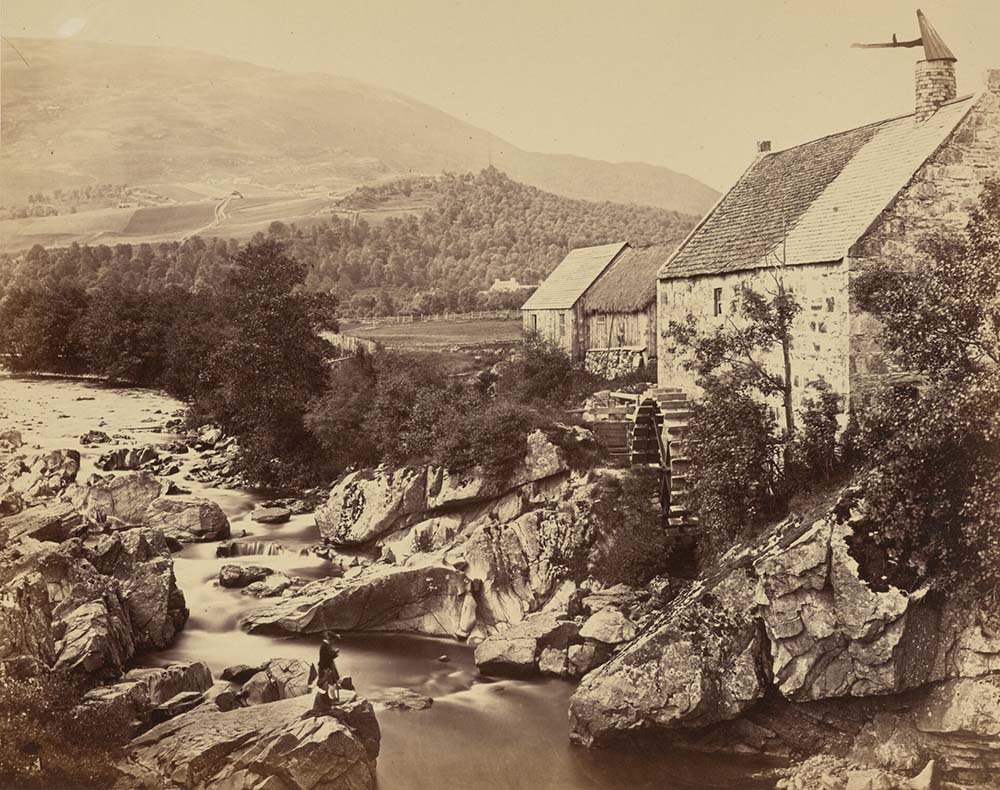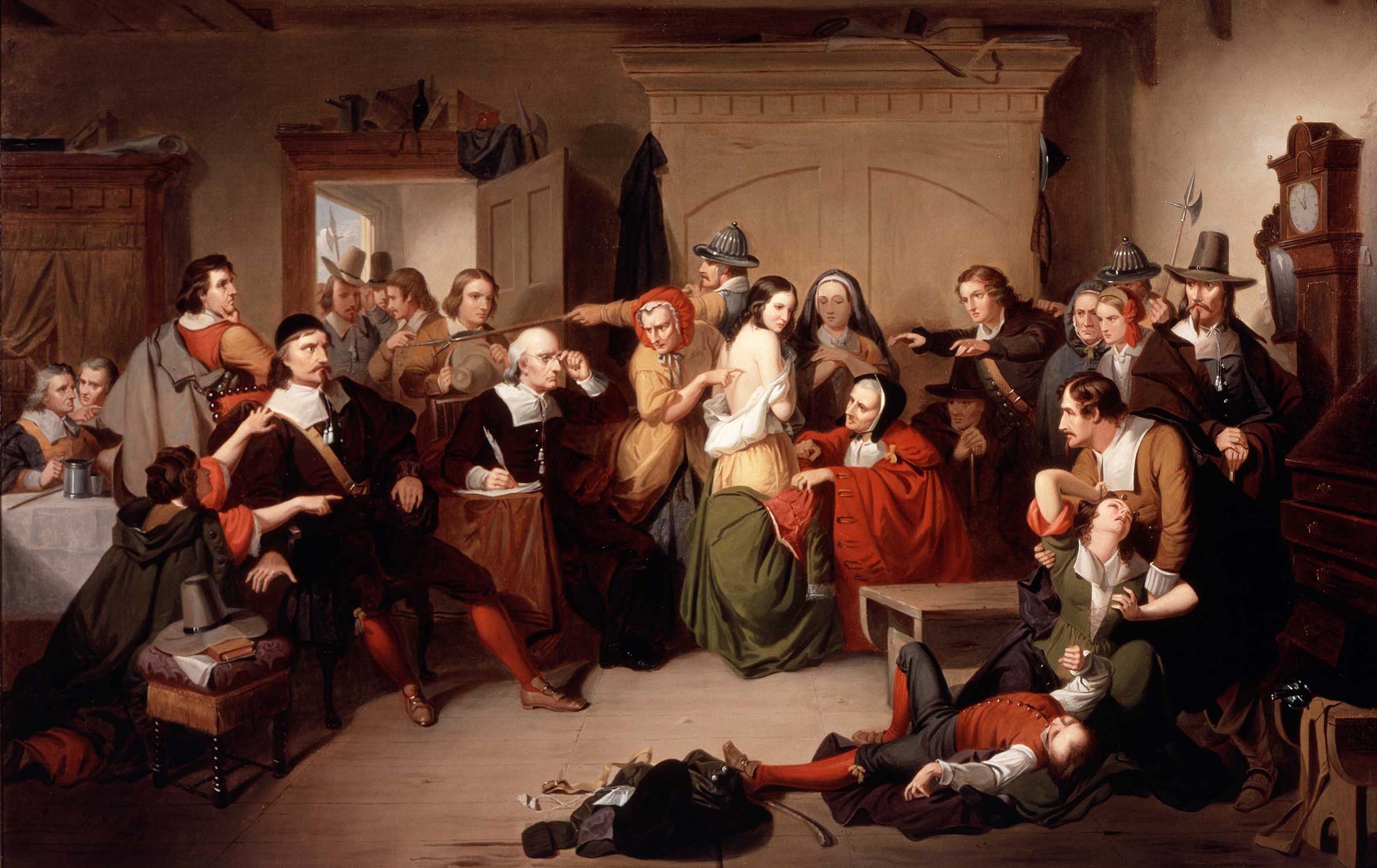Alas, I deserve not to be sitting here, for I have done so many evil deeds, especially killing of men…I deserve to be riven upon iron harrows and worse if it could be devised.
—Isobel Gowdie’s third confession, 1662
Isobel Gowdie was tried for witchcraft in 1662, during what historians call “The Great Scottish Witch-hunt,” due to the unprecedented scale of suffering and death during that spate of mass hunts. In these turbulent years, the Scottish judicial system was changing after the dissolution of the Cromwellian union. It was a time of political and economic crisis, where influential members of the ruling elite felt the threat of witchcraft was urgent. This led the central government to issue an unprecedented number of trial commissions. These years saw an increase in professional witch-finders or “prickers,” who were paid by the number of witches they claimed to discover. The hunt grew exponentially as those arrested named others. Isobel was one of at least 664 people accused across Scotland between the spring of 1661 and the autumn of 1662, and she may have been one of the 300 or more executed. The Privy Council in Edinburgh granted a commission to try her, but there is no record of her death.
Isobel’s confessions are the most extensive of any witch-trial interrogation. She was questioned four times between April 13 and May 27, 1662. Notary John Innes was barely able to keep up with her. He wrote down her words as best he could, adding “etc.” at points where he just wouldn’t get it all down. An unlikely amanuensis, Innes transcribed her confessions in the first person, giving her voice an immediate subjectivity. Though she speaks in seventeenth-century Scots and much of the document is damaged, her words are intimate. They spin outrageous fictions, weaving in ballads and rhyming charms that teem with bad magic, mystery, and folk practices. She knew the laird, the minister, and others were listening to her every word, so she said more and more. Her last words were a death rattle of a swan song—gleeful and damning. This was her final spell, and it is a masterful literary work. She describes the uncanny beings of her world in evocative detail. Her fairy queen is “brawlie” or beautiful, clothed in white linens. Elf boys speak “gowstie-like” (ghostly) as they “whytts and dightis,” creating fatal arrowheads. The poetry of her shape-changing chant is haunting.
I shall go into a hare
with sorrow and syt [sigh] and meikle [great] care
and I shall go in the devil’s name
Aye, while I come home
Witchcraft scholar Emma Wilby recently found the full confessions tucked away in a box of uncatalogued papers at the National Archives of Scotland. Her massive study, which grew from this finding, is nuanced and extensively detailed. She argues that Isobel Gowdie may have been a shamanistic practitioner. European witchcraft scholars Carlo Ginzburg and Éva Pócs present similar interpretations of ecstatic experience presented in the witch trials. Other scholars remain skeptical about the possibility of genuine spiritual experience in these documents.
Isobel was undoubtedly a storyteller. When I recount the things Isobel did, I am speaking of the character she created in the narrative of her confession. In mining these records, I have come to understand that what is real might not be what is true, and vice versa. One thing is certain: Isobel’s agile intelligence could hold two contradictory truths simultaneously, and I can only hope to be as clever.
Isobel’s confessions reference myriad ballads and folk tales, all repurposed for the fevered story she told her interrogators. One ballad, “The Elfin Knight,” sometimes called “The Devil’s Courtship,” has countless versions: the first was recorded in 1610, though the story itself is much older. It’s a kind of Bluebeard tale, with the heroine outsmarting her serial-killer suitor. In the ballad, a lady named Isobel is seduced by the sound of an elfin horn. She dreams of an uncanny knight who comes and invites her to the “greenwood.” There, she finds he has killed seven other women, and she is to be the eighth. She tricks him and kills him with his own dagger. In another version, Lady Isobel outsmarts the Elfin Knight by daring him to accomplish a series of impossible tasks; and in others, the two spar with a series of riddles. Cunning as a means of escape is the common thread in this cautionary tale that is woven through Isobel Gowdie’s confessions. Such fairy-tale lessons might prepare a woman for encounters with a lone predator, but they could not equip her with the tools she would need to survive a witchcraft interrogation.
In the ballad, the Elfin Knight asks for a shirt made without needle or thread, and Lady Isobel says she’ll make one as soon as he can find a piece of land between sea and strand, and then “plow it with a ram’s horn / and sow it all over with one pepper corn.” In one of the infamous passages from Isobel Gowdie’s confession, she yokes a plow made of a ram’s horn to a team of frogs and leads them around a field widdershins so that “thistles and briars might grow there” instead of corn.
The marginal landscapes of the ballad, both the greenwood and the place “between salt sea and strand” were places Isobel Gowdie knew well. Nairn Beach in the northwest Highlands, near where Isobel lived, has a spit of land subsumed daily by a treacherous incoming tide. Solid ground sinks into the sea quickly and fog descends, confusing walkers. Isobel knew a world that was two things at once and could change with the shifting of a cloud. Her Elfin Knight was a devil, an animal, and a human man who danced and made merry, but also beat and raped her.
She describes the devil as:
a werie meikle blak roch man. He will lye als hewie upon ws…lyk an malt-seck…He wold com to my hos-top in the shape of a crow…now and then. I wold ken his woice, at the first heiring of it, and wold goe forth to him.
(The devil was a very big, dark, hairy man. He will lay all heavy upon us like a malt sack. He would come to my housetop in the shape of a crow now and then. I would know his voice at the first hearing of it and would go forth to him.)
At times, she had “carnall cowpulation” with him, noting he was “werie cold; and I found his nature als cold within me as spring well water.” She said she could not refuse him—he was irresistible and inexorable.

Isobel lived in Lochloy, a strip of land south of Nairn Beach, now a newly planted forest, an equestrian training ground, and a golf course. Downie Wood is to the east, a short walk away, and it was there Isobel met the king and queen of the fairies. She lived in a black house on this land belonging to the laird of Park. It would have been a modest earthen house that was dark inside and smoke-filled from the open fire, with a hole in the ceiling for a chimney. In the Highlands, diarist Dorothy Wordsworth noted that black houses looked like “so many black molehills.” Isobel’s house was made of stones, covered with sod and red clay, thatched with heather, broom, and branches of fir bound in ropes made of star moss. It had a single room, divided by a partition woven of marram grass and willow. In winter, the animals would be on one side; on the other would be Isobel, her husband John Gilbert, any children who survived, and the ghosts of those who did not. The floor was wet with rain that came in gusts through the door. In the darkness, she tied up a pennant of fish stolen from the fishing boats on the beach, tossing durkins, or pinecones, into the fire to scent and flavor the smoking meat.
Isobel went to church in the kirk of Auldearn, now a picturesque pink sandstone ruin, a roofless shelter perched on a volcanic hill. Auldearn is a quiet, leafy village near the sea, hemmed in by the susurration of the A96. Green hills soften the landscape to the north. Here, she listened to the sermons of the zealous, Covenanting minister Harry Forbes, a man she hated so much that she cursed his children with wax poppets.
Isobel said that she “covenanted” with the devil. She confessed to this compact, a satanic version of the Covenanters’ agreement with the Presbyterian God. The Scots word covin—meaning both an agreement and a band or company—is the root of the word coven. Covenanters were the dominant political and religious movement in Scotland at the time of Isobel’s interrogation. They believed in the covenant of grace—the faithful gave themselves soul and body to God in return for salvation. This deal could be a ceremonial, public promise of conformity to Covenanting doctrine, or it could be deeply private, spontaneous, and ecstatic. Though the seventeenth-century Kirk disapproved of these passionate promises, they persisted. Isobel used the word meaning an agreement, as in covenant, but also a crew, a fellowship. Yet her wording, as with so many of her confessions, has a subversive ring.
Isobel Gowdie might have been kept in the church steeple in between her interrogations. She was held in solitary confinement from April to mid-May of 1662 and officially questioned four times. While John Innes comments that the confessions were “voluntary,” this must be qualified. Some forms of maltreatment—beating, sleep deprivation, and being shaved and pricked for the “witch’s mark”—were not considered torture. It is possible Isobel endured all of these during her imprisonment.
In 1662 a “pricker” named Mr. Paterson worked the forty-mile stretch of coast from Inverness to Elgin. Auldearn lies squarely between these two towns, making it almost certain Paterson would have examined Isobel Gowdie. Paterson’s infamous method required that the accused, while blindfolded, find and remove the pin after it had been inserted “to the head.” Paterson was later discounted as a fraud after it was discovered that they were a woman disguised in men’s clothing. Pricking was a lucrative profession in 1662, and perhaps some thought it was safer to operate on the side of the hunters rather than potentially fall prey to them.
While Isobel was imprisoned, her interrogators built a case for a commission to try her as a witch. At the time of the second confession, John Innes records that several other witnesses were present, and there is a similar note in the third confession. Word had got out, and a crowd had gathered. Perhaps these folk came to hear Isobel the tale-teller say her piece. She warmed to the crowd, and the confessions grew more performative with each meeting. By the third confession, she gave her audience taunts of rhyming iambs and complex curses tinged with remorse. Wilby argued some of the strangeness of her confessions can be attributed to false memory created by the repeated interrogations and the psychological effects of isolation. By the fourth confession, all the vivid song and bravado were gone, as was the crowd. She was alone again with her interrogators, repeating by rote what they asked of her.
Excerpted from Ashes and Stones: A Journey Through Scotland in Search of Women Hunted as Witches by Allyson Shaw. Copyright © 2023 by Allyson Shaw. Published by Pegasus Books, October 2023.

